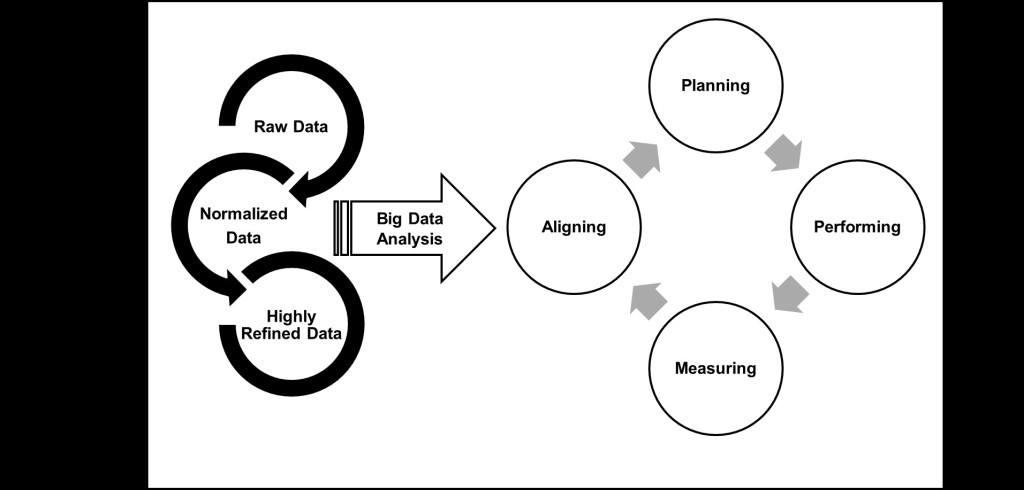Over the past decade, many companies in the capital project world have done a great job implementing effective front end planning processes such as PDRI – in doing so they have initiated a process that generates substantial amounts data.
Is there anything that can be done with the vast amounts of Big Data collected?
Wouldn’t it be great if it could be used to spot trends, set benchmarks for future projects, or find leading indicators that could be converted into actionable insights and help make better business decisions? Is it possible to take that historical project Big Data and turn it into useful information?
Some data is used by people responsible for running the asset, and some might get picked over by lawyers looking for who to point fingers at as construction contract issues move though litigation. For the most part, much of the data sits idly gathering digital dust in cyberspace. This is very unfortunate because much of that data can be turned into useful information.
When analyzed, this big data can serve as a valuable resource for project performance assessment and future planning. Unfortunately, the complex and unstructured nature of the data prohibits traditional data management methods such as relational databases and data visualization from being used. This challenge presents a great opportunity for the development of a robust big data analytics method for construction projects.
But where do you start?
Front-end planning is the process of developing sufficient documentation to support owners and investors in addressing project risks, and in making resource-allocation decisions to maximize the probability of project success. During the front-end planning phase, long-term strategies are formed based on project constraints such as resource limitations, government regulations, and environmental restrictions to name a few. The goal is to make the best project decisions possible based on incomplete information.
Big data in capital project starts during front end planning. As such, it presents an ideal opportunity to apply big data analytics to increase the information available and improve the effectiveness and efficiency of planning and decision-making. When a company rigorously analyzes their front end planning data along with their historical project performance information – typically cost and schedule – substantial insight can be gained. It can:
[list type=”check”]
- highlight the most feasible alternatives,
- allow tasks within a portfolio of projects to be prioritized,
- help minimize overall project delivery risks, and
- enable project performance appraisals for prediction or review purposes.
[/list]
But how can you get there?
At The Project Level
To apply big data analytics in front end planning for a project, a robust data collection system must be designed based on the nature of the project and purpose of the analysis. This system should output both newly collected and historical data to an appropriate assessment standard to allow for analysis. The Project Definition Rating Index (PDRI), developed by the Construction Industry Institute (CII), is a widely adopted standard to facilitate project appraisal. The methodology stipulates key project elements that are rated by stakeholders in terms of scope definition. The PDRI scoring framework enables the project team to pool their expertise in a workshop format to identify and understand the cross-functional impact of project risks. The data collected during PDRI sessions provides an ideal structure to apply big data analytics. It allows an analyst to mine historical PDRI data from standardized elements. Robust methods can be developed based on these insights to support capital project organizations in proactive strategic planning. Such methods include the implementation of specific processes, information technology systems, and training to fill existing capability and knowledge gaps that are common within the construction industry.
At The Portfolio Level
Whether you’re in mining, oil and gas or some other extractive industry, managing a single project is hard work. Managing an entire portfolio of projects is harder, especially in terms of resource, cost, and schedule management. PDRI big data analysis has the potential to deliver significant intelligence and actionable insights to ease and enhance a portfolio manager’s decision-making process. By providing portfolio managers with the best information possible they can make informed judgments of which project(s) requires the most effort and greatest priority. By providing insight into the areas that have the greatest influence on the portfolio, the value of the portfolio can be maximized.
Here are a few practical examples of usable information that can be retrieved by analyzing historical performance and PDRI:
[list type=”number”]
- Understanding which planning issues have the greatest impact on overall project performance, and focusing continuous improvement investments accordingly;
- Providing leading indicators to forecast project performance in terms of cost and time overrun;
- Providing insights into project status using key performance indicators;
- Classifying projects based on associated major risks;
[/list]
These big data deliverables can help take your project and portfolio management to a new level of risk management and continuous improvement in front end planning. Significant value can be achieved by applying big data analytics to front end planning. While considerable attention has been paid to the PDRI methodology, there has been little attention paid to analysis of historical front end planning big data. An huge opportunity exists for progressive organizations that areready to make investments in big data.
Is your organization ready to turn your mountains of big data into useful decision making information?
About the Authors
Dr. Mahdi Safa is a Senior Business Analyst with Valency, responsible for Valency’s front end planning applied analytics services. He holds a PhD in Civil Engineering from the University of Waterloo and an MBA from Wilfrid Laurier University. Dr. Safa has authored numerous publications related to capital project front end planning, construction productivity and supply chain management.





